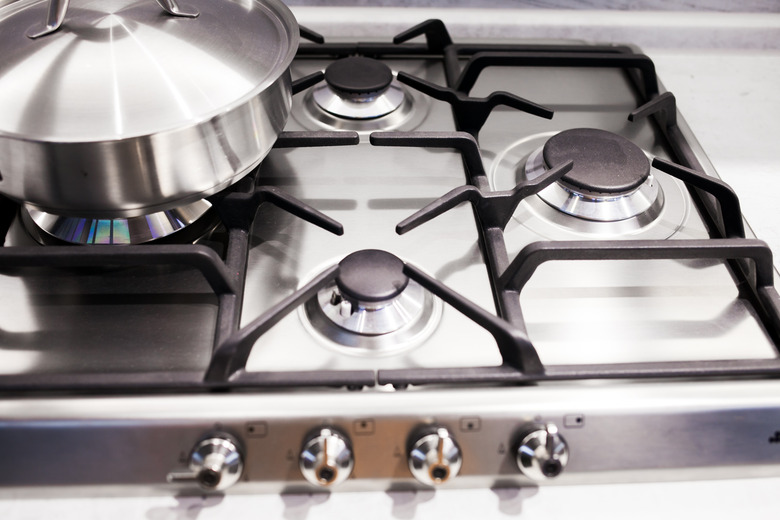Can I Spray Paint My Cooktop Grate?
If you're wondering whether you can paint your cooktop grate, the answer is yes. A better question might be should you paint your cooktop grate with stove and grill spray paint? And that's a bit trickier to answer.
Tip
In theory, yes, you can paint your cooktop grate, but you'll need to source truly food-safe grill paint, which can be hard to find. It's recommended you simply clean the grates instead, or replace them, if they're really worn and chipping.
Should You Paint Stove Grates?
Should You Paint Stove Grates?
When grates are worn, faded or chipped, it's advisable to replace them rather than painting or simply cleaning them. Painting them can be a lot of work and could just result in flaking and chipping down the line, which may be an even more unattractive (and potentially unsafe) problem to have. The best approach, really, is to clean the grates and understand that a little wear and tear are natural and do not generally impact performance.
Stove and Grill Paint Basics
Stove and Grill Paint Basics
When painting stoves and grills, it's not a job for your usual spray paint. You'll need job-specific paint because it needs to withstand high, direct heat for the long haul. There are "BBQ and stove paint" products, which do a great job and usually can sustain temperatures over 1,000 degrees Fahrenheit, according to Rust-Oleum. However, this type of paint is not intended for the actual cooking surface. It's only for use on the outside of the stove or grill.
BBQ and stove paints are never intended to be in contact with flames, as these can cause the paints to off-gas. Toxic fumes might come into contact with your food, making it very unsafe for cooking and consumption.
Cleaning/Restoring Cast Iron Grates
Cleaning/Restoring Cast Iron Grates
If your grate is made of cast iron, you may see advice from some sites saying to pop them in your self-cleaning oven and let the magic happen, but some manufacturers like Subzero-Wolf recommend not doing that. Check your manufacturer's advice on whether self-cleaning ovens can help you out. Instead, the best way to get grates clean is with a mild abrasive or baking soda and a fine steel wool to remove any rust or debris. A no-scratch cleaning pad can help too. Bon Ami is a cleaning agent with mild abrasion recommended by the pros for exactly this kind of project.
Cast iron may need to be seasoned with oil afterwards, per the usual process — a light coating, then wipe off. Some people like to soak the grates in a mix of ammonia and water, but this can be corrosive and create a whole new batch of problems for you.
Porcelain & Enamel Grate Cleaning
Porcelain & Enamel Grate Cleaning
Put your porcelain or enamel grates in your sink with a little grease-fighting detergent. Fill a kettle with water, boil it and carefully pour boiling water over the grates. Let them soak until water is cool enough to touch, at least 15 minutes.
Time to scour a bit with no-scratch scrubber to fight the grime. If they're coming clean with a good soak, you're in luck. If not, then experts recommend Bon Ami as the best cleaner for this sort of application, as it degreases and removes tough residue. Rinse with warm water and dry well.
Don’t Forget the Stove Top!
Don't Forget the Stove Top!
Before replacing your spiffed-up grates, be sure you tackle your stove top, so you get the satisfaction of a sparkly stove. Spray with a little cleaner and let that sit while you tackle the grates. But, when doing so, be careful of using things like baking soda, as some surfaces can discolor.
